Introduction: How to Get Rid of Mold in the Bathroom Ceiling
Mold on your bathroom ceiling is not just unsightly but also a potential health hazard. It thrives in moist environments and can cause respiratory issues, allergies, and even structural damage if left untreated. In this comprehensive guide on how to get rid of mold in the bathroom ceiling, we will walk you through the best methods to remove mold and prevent its return.
By following these steps, you can ensure a mold-free bathroom and improve indoor air quality. This article covers the best tools, cleaning solutions, and preventive measures to tackle bathroom mold effectively.
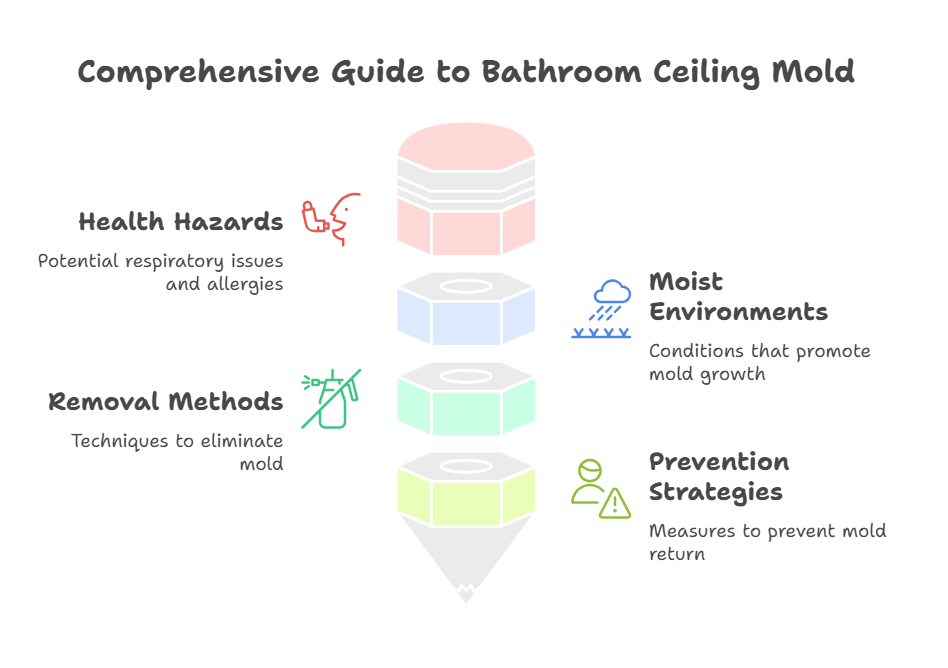
What Causes Mold in the Bathroom Ceiling?
Understanding what causes mold growth in your bathroom ceiling is crucial for preventing its recurrence. The primary factors contributing to mold development include:
- High humidity levels due to showers and baths
- Poor ventilation preventing moisture from escaping
- Leaks in plumbing or roof leading to dampness
- Lack of sunlight providing an ideal breeding ground for mold spores
- Porous surfaces retaining moisture, allowing mold to thrive
- Unsealed grout and tiles, which allow moisture penetration
- Frequent temperature fluctuations, creating condensation
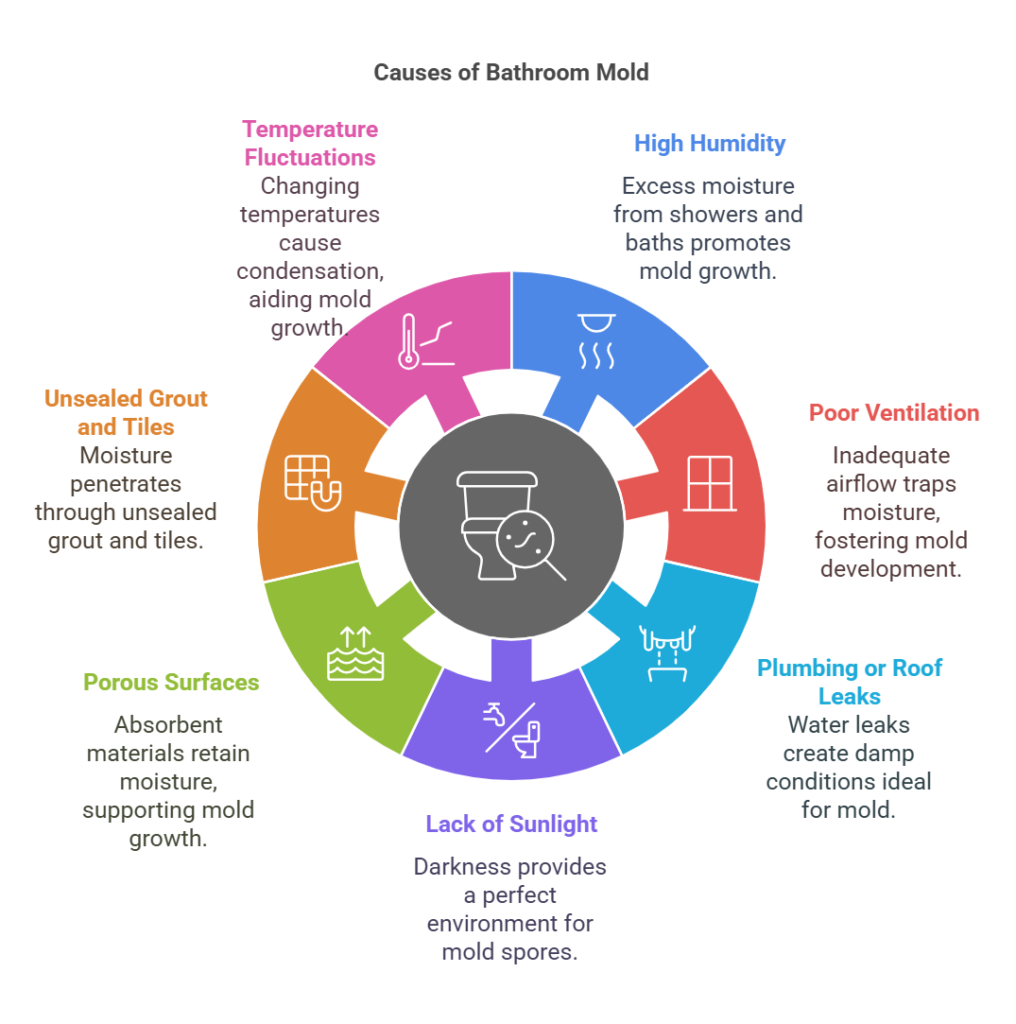
Please visit to understand black mold in bathroom ceiling click here
The Science Behind Mold Growth
Mold is a type of fungus that reproduces by releasing spores into the air. These spores land on damp surfaces and start growing. The combination of moisture, warmth, and organic material like paint, drywall, or wood makes the bathroom ceiling an ideal location for mold growth.
Once mold takes hold, it spreads quickly, and if left untreated, it can lead to more significant health concerns, including asthma, chronic sinus infections, and weakened immune responses.
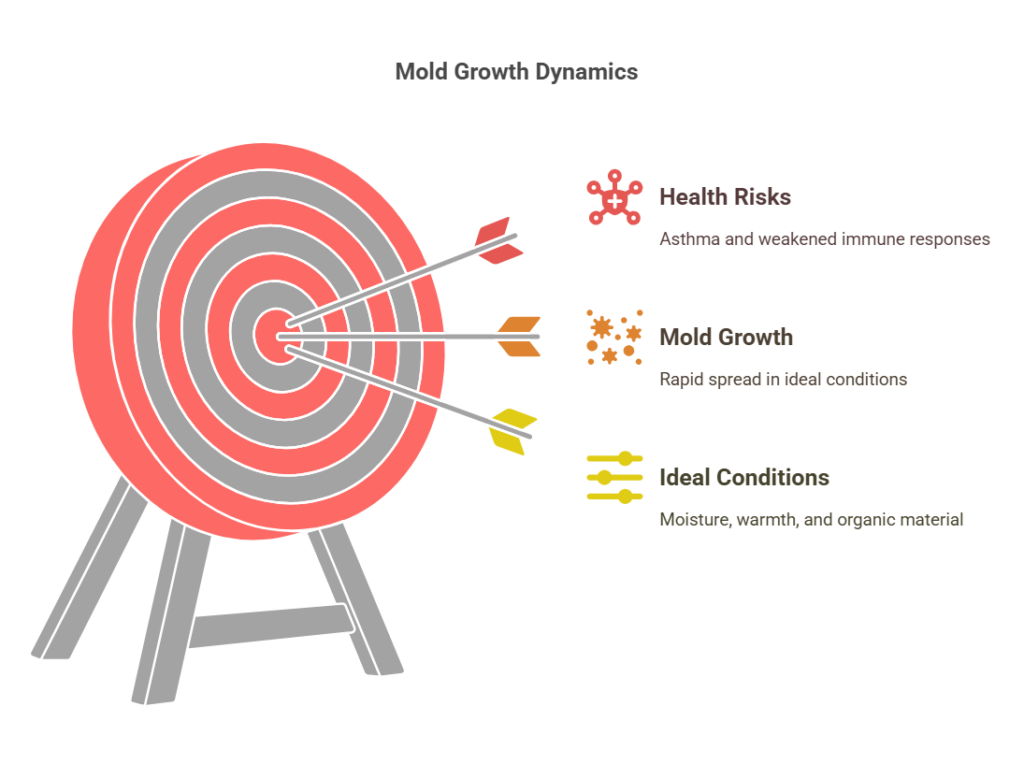
How to Get Rid of Mold in the Bathroom Ceiling
Identifying Mold on the Bathroom Ceiling
Mold can appear in various forms and colors, including black, green, yellow, or white patches. Some mold types are harmless, while others, such as black mold (Stachybotrys chartarum), can be toxic.
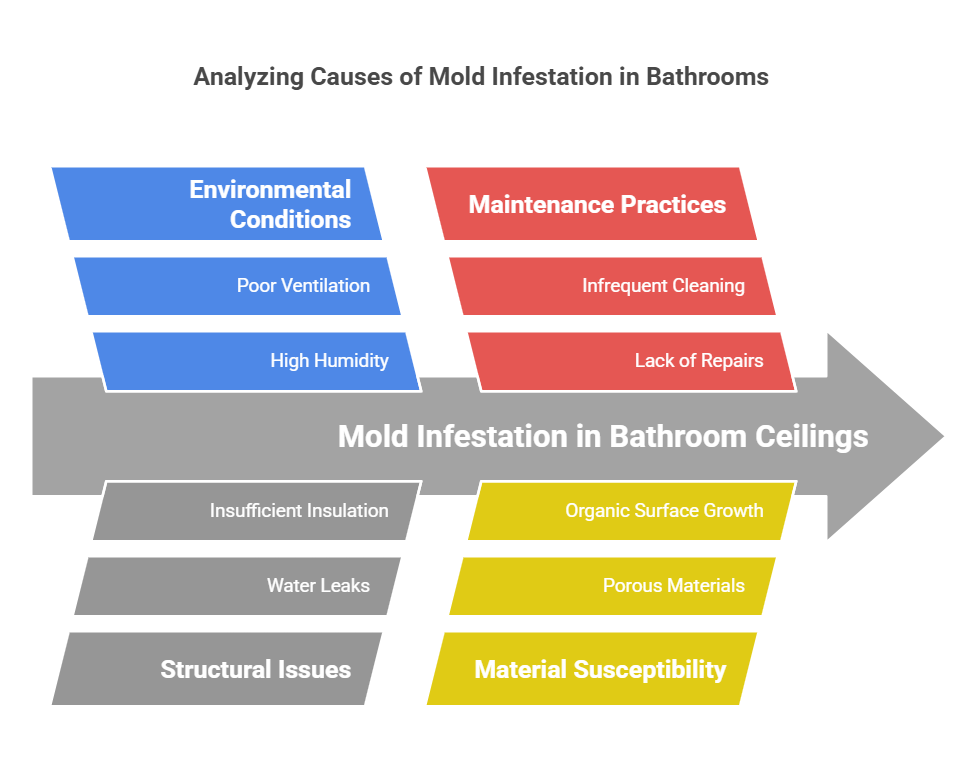
Common signs of mold infestation include:
- Dark spots or patches on the ceiling
- A musty or damp smell in the bathroom
- Peeling paint or bubbling drywall
- Increased allergy symptoms such as sneezing, coughing, and itchy eyes
- Persistent condensation on the ceiling
- Brown, green, or black stains spreading over time
If you notice any of these signs, immediate action is necessary to prevent the spread of mold.
Safety Precautions Before Removing Mold
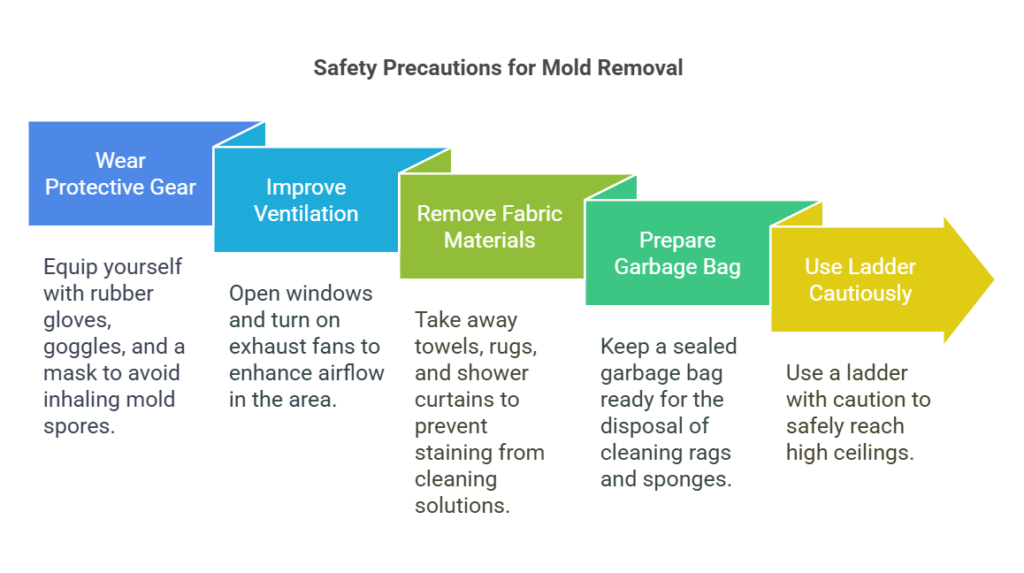
Before starting the mold removal process, it is important to take the following safety measures:
- Wear protective gear (rubber gloves, goggles, and a mask) to avoid inhaling mold spores.
- Open windows and turn on exhaust fans to improve ventilation.
- Remove any fabric materials (towels, rugs, shower curtains) to prevent staining from cleaning solutions.
- Keep a sealed garbage bag ready for disposal of cleaning rags and sponges.
- Use a ladder with caution to reach high ceilings.
Best Methods How to Get Rid of Mold in the Bathroom Ceiling
1. Using Bleach Solution (Most Effective for Severe Mold)
Bleach is one of the most powerful mold-killing agents. Here’s how to use it:
Tools Required:
- Bleach (e.g., Tilex Mold and Mildew Remover)
- Paint tray
- Painter’s tool with a microfiber applicator
- Telescoping rod (for hard-to-reach areas)
- Protective gloves and mask
- Sponge and a clean cloth
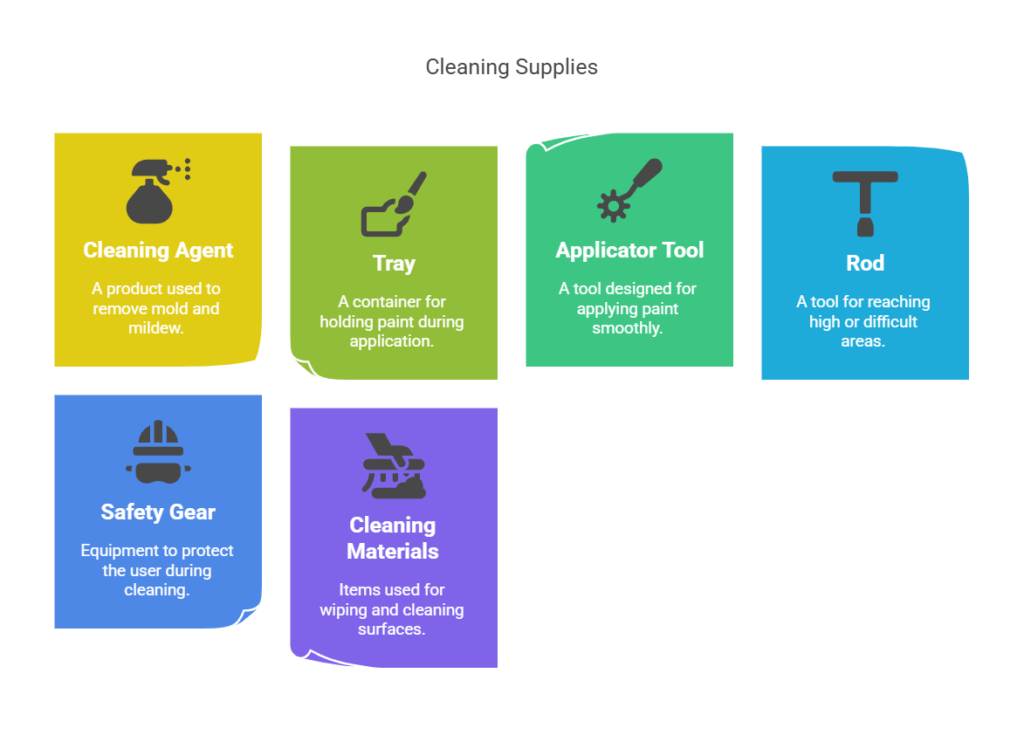
Steps to Follow:
- Pour bleach solution into a paint tray.
- Dip the painter’s tool into the solution.
- Apply it evenly to the affected ceiling areas.
- Let the solution sit for 10-15 minutes to penetrate the mold.
- Rinse with warm water and let it dry.
Note: Ensure proper ventilation when using bleach as fumes can be harmful.
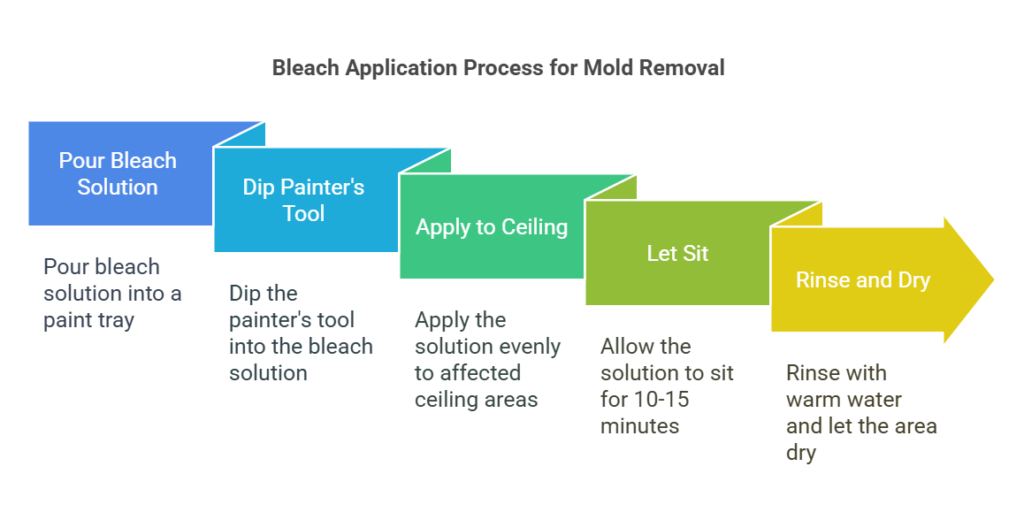
2. White Vinegar Solution (Natural & Non-Toxic)
White vinegar is an excellent eco-friendly alternative for mold removal.
Steps to Follow:
- Pour undiluted white vinegar into a spray bottle.
- Spray generously onto the moldy ceiling.
- Let it sit for at least one hour.
- Scrub the area gently with a soft-bristle brush.
- Wipe with a damp cloth and dry completely.
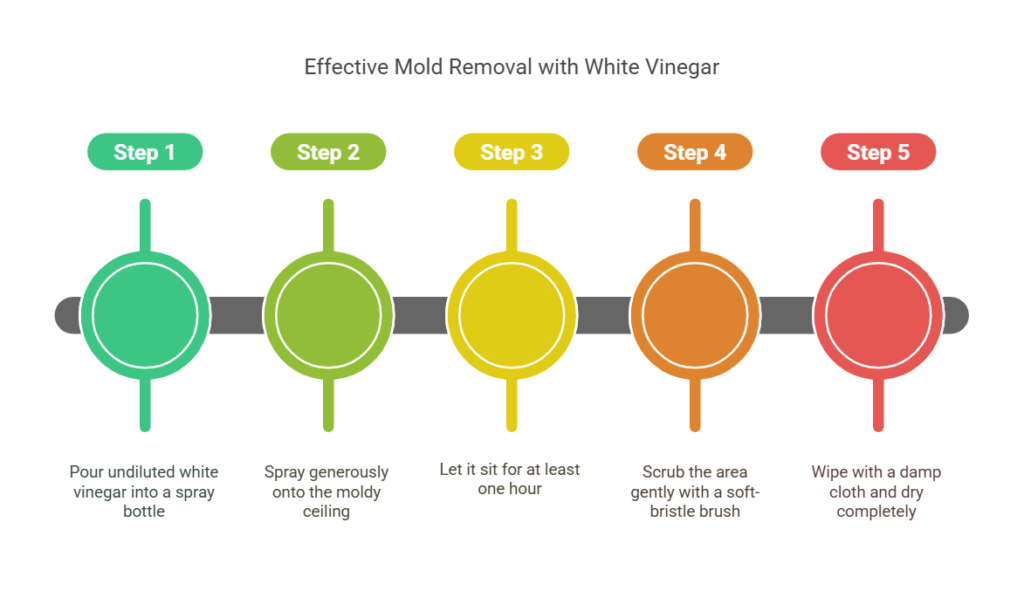
3. Baking Soda & Water Paste (For Mild Mold)
Baking soda is another non-toxic method to remove mold and prevent future growth.
Steps to Follow:
- Mix 1 tablespoon of baking soda with water to create a thick paste.
- Apply the paste to the moldy ceiling using a sponge or brush.
- Scrub gently and let it sit for 10-15 minutes.
- Rinse with clean water and dry thoroughly.
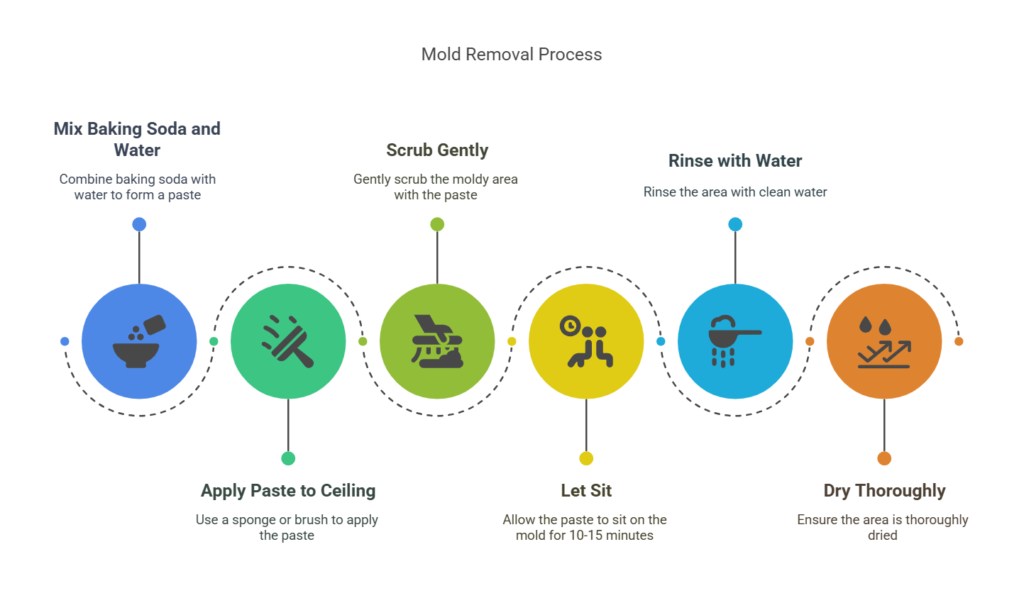
4. Hydrogen Peroxide (Safe & Effective Alternative)
Hydrogen peroxide is an antifungal and antibacterial agent that works well for mold removal.
Steps to Follow:
- Pour 3% hydrogen peroxide into a spray bottle.
- Spray directly on the moldy areas.
- Let it sit for 10 minutes.
- Wipe clean with a cloth and let it dry.
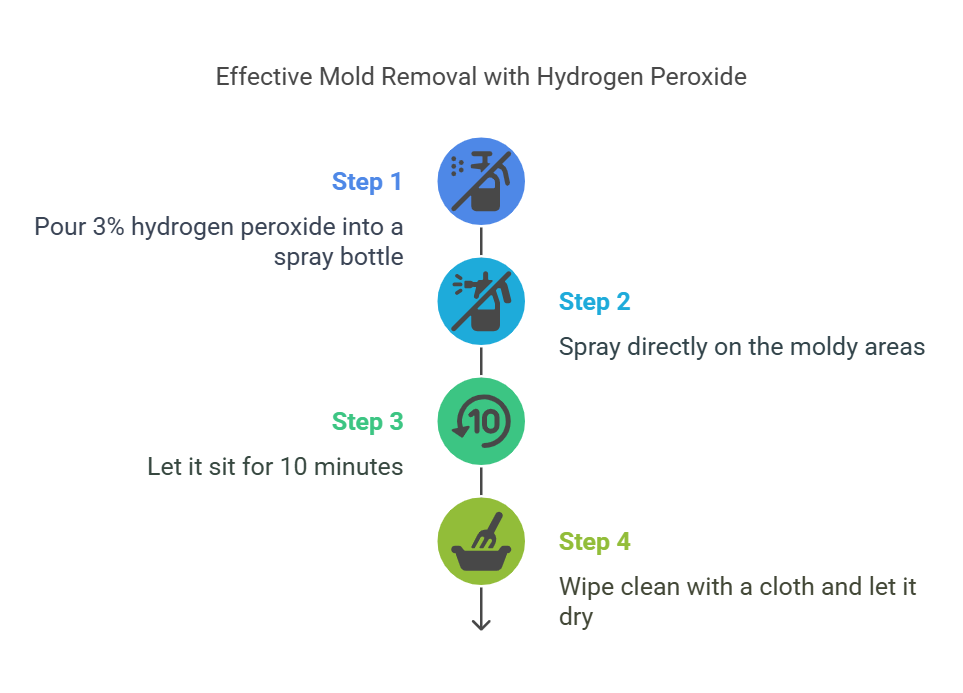
5. Commercial Mold Cleaners
If home remedies don’t work, opt for commercial mold removers like Concrobium Mold Control or RMR-86 Mold Stain Remover.
Steps to Follow:
- Follow product instructions carefully.
- Apply directly to the moldy surface.
- Let it sit as directed.
- Scrub, rinse, and dry the area.
How to Get Rid of Mold in the Bathroom Ceiling
Preventing Mold Growth in the Bathroom Ceiling
1. Improve Bathroom Ventilation
- Install exhaust fans to remove excess moisture.
- Open windows after showers to allow fresh air circulation.
- Use a dehumidifier to maintain optimal humidity levels.

2. Fix Any Leaks
- Inspect plumbing pipes and roof for leaks.
- Repair any dripping faucets or leaking showerheads.
- Ensure water drains properly away from the foundation.

3. Use Mold-Resistant Paint
- Apply mold-resistant primer and paint on ceilings and walls.
- Choose semi-gloss or satin finishes as they resist moisture better.
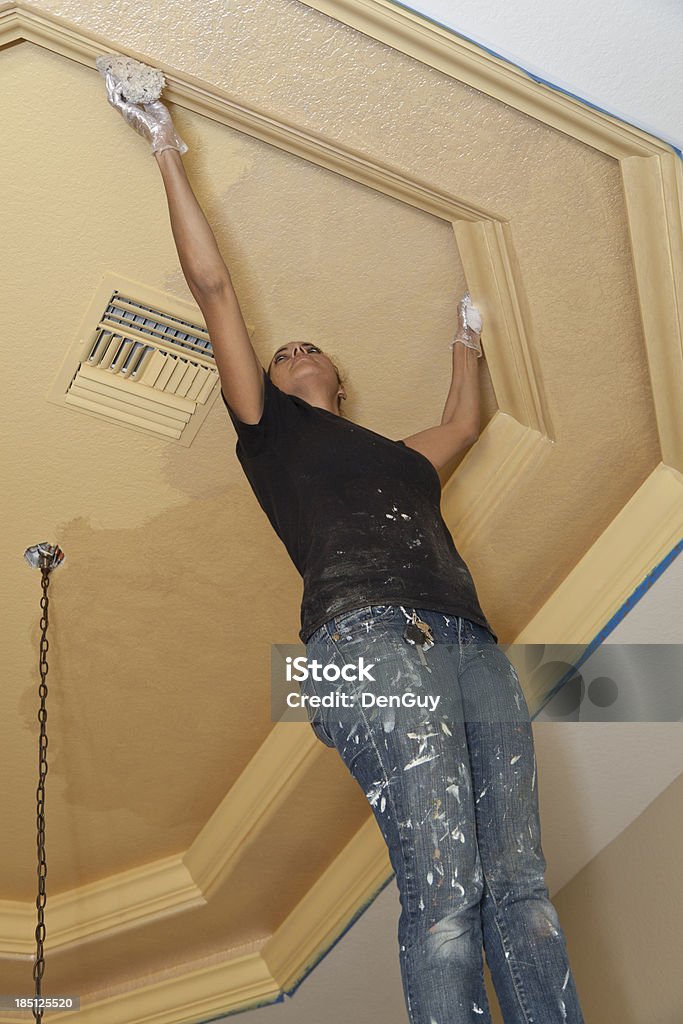
4. Regular Cleaning & Maintenance
- Wipe bathroom ceilings and walls with a vinegar-water solution weekly.
- Keep shower curtains, towels, and bath mats clean and dry.
- Remove excess moisture with a squeegee after every shower.

FAQs About How to Get Rid of Mold in the Bathroom Ceiling
Q1: Can I paint over mold on the ceiling?
No. Painting over mold will only trap moisture, causing it to spread. Always remove mold before painting.
Q2: How often should I clean my bathroom to prevent mold?
Ideally, deep clean your bathroom once a month and maintain regular ventilation.
Q3: Is mold on the bathroom ceiling dangerous?
Yes, mold can cause respiratory issues, allergies, and structural damage if left untreated.
Q4: What’s the best way to prevent mold from returning?
Improve ventilation, fix leaks, reduce humidity, and use mold-resistant paint.
Conclusion How to Get Rid of Mold in the Bathroom Ceiling
By following these methods on how to get rid of mold in the bathroom ceiling, you can keep your bathroom mold-free. Implementing these preventive tips ensures a cleaner and healthier living space.